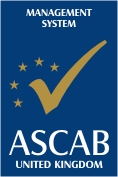Safe food from the farm with ISO/TS 22002-3
Date : 4 January 2012
Safer food farming is the principal benefit targeted by a new ISO technical specification, latest in the ISO 22000 series of standards for food safety management systems.
Farms are the first link in many supply chains that bring food to the kitchen table and the new ISO technical specification, ISO/TS 22002-3:2011, has been developed to ensure that farmers implement best practice in maintaining a hygienic environment and play their part in controlling food safety hazards in food chains.
ISO/TS 22002-3 is one of a series of support documents in the ISO 22000 series providing requirements for food safety prerequisite programmes (PRPs). PRPs address the basic conditions and activities that are necessary for ensuring hygiene throughout the food chain during production, handling and provision of food safe for human consumption. ISO/TS 22002-3 specifies the requirements and guidelines for design, implementation and documentation of PRPs for farming.
"The chain from farm to fork may be a long one, even global in scale, involving many different participants," comments Dominique Berget, leader of the ISO team that developed the new document. "Therefore, its important to ensure food safety right from the very first link, which is often the farm. ISO/TS 22002-3 provides state-of-art requirements and guidance for getting this right."
It will be useful for all organizations, including individual farms or groups of farms, regardless of size or complexity, which are involved in the farming step of the food chain and wish to implement PRPs in accordance with ISO 22000:2005, the standard that gives the basic requirements for food safety management.
It is applicable to the farming of crops (e.g. cereals, fruits, vegetables), living farm animals (e.g. cattle, poultry, pigs, fish) and the handling of their products (e.g milk, eggs).
All operations related to farming are included in the scope (e.g. sorting, cleaning, packing of unprocessed products, on-farm feed manufacturing, transport within the farm).
The document includes specific examples of PRPs, although these are for guidance only since farming operations are diverse in nature according to size, type of products, production methods, geographical and biological environment, related statutory and regulatory requirements etc. Therefore, the need, intensity and nature of PRPs will differ between organizations.

